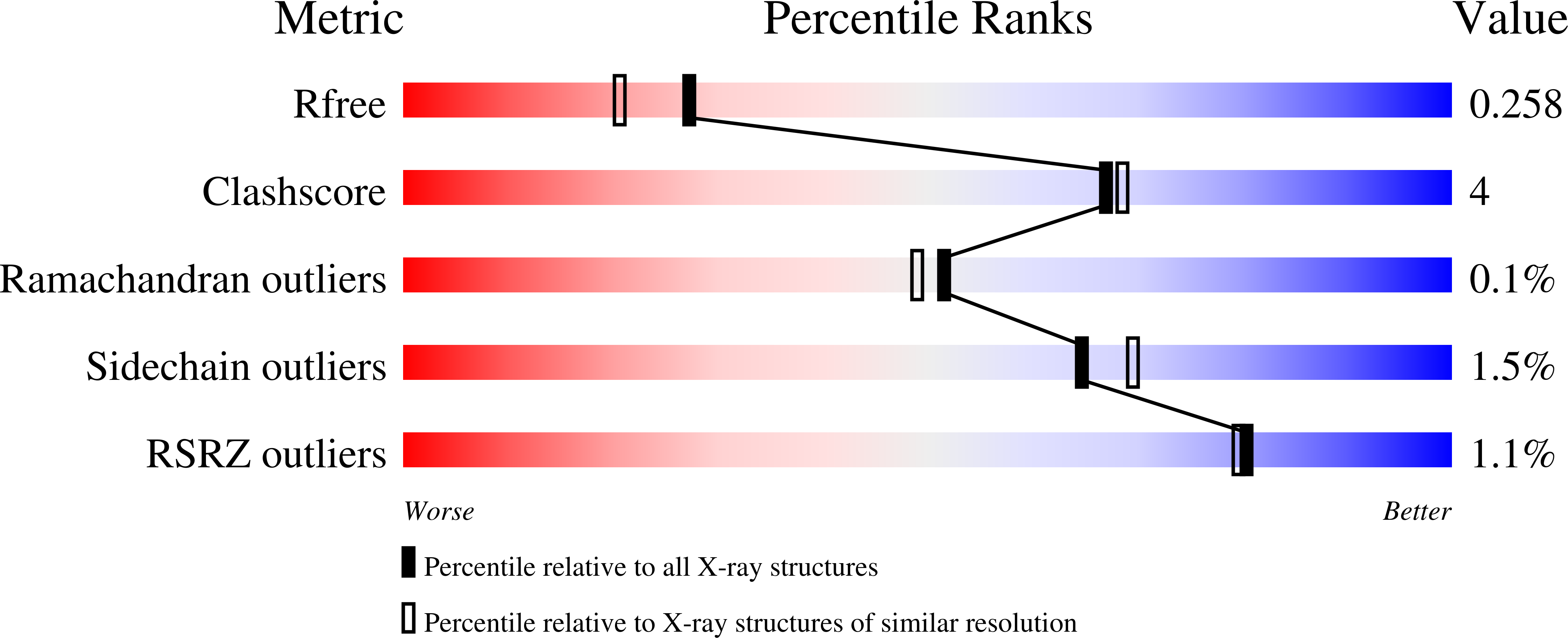Polysaccharide utilization loci from Bacteroidota encode CE15 enzymes with possible roles in cleaving pectin-lignin bonds.
Seveso, A., Mazurkewich, S., Banerjee, S., Poulsen, J.-C.N., Lo Leggio, L., Larsbrink, J.(2024) Appl Environ Microbiol 90: e0176823-e0176823
- PubMed: 38179933
- DOI: https://doi.org/10.1128/aem.01768-23
- Primary Citation of Related Structures:
8Q6S, 8QCL, 8QEF - PubMed Abstract:
Lignocellulose is a renewable but complex material exhibiting high recalcitrance to enzymatic hydrolysis, which is attributed, in part, to the presence of covalent linkages between lignin and polysaccharides in the plant cell wall. Glucuronoyl esterases from carbohydrate esterase family 15 (CE15) have been proposed as an aid in reducing this recalcitrance by cleaving ester bonds found between lignin and glucuronoxylan. In the Bacteroidota phylum, some species organize genes related to carbohydrate metabolism in polysaccharide utilization loci (PULs) which encode all necessary proteins to bind, deconstruct, and respond to a target glycan. Bioinformatic analyses identified CE15 members in some PULs that appear to not target the expected glucuronoxylan. Here, five CE15 members from such PULs were investigated with the aim of gaining insights on their biological roles. The selected targets were characterized using glucuronoyl esterase model substrates and with a new synthetic molecule mimicking a putative ester linkage between pectin and lignin. The CE15 enzyme from Phocaeicola vulgatus was structurally determined by X-ray crystallography both with and without carbohydrate ligands with galacturonate binding in a distinct conformation than that of glucuronate. We further explored whether these CE15 enzymes could act akin to pectin methylesterases on pectin-rich biomass but did not find evidence to support the proposed activity. Based on the evidence gathered, the CE15 enzymes in the PULs expected to degrade pectin could be involved in cleavage of uronic acid esters in rhamnogalacturonans.IMPORTANCEThe plant cell wall is a highly complex matrix, and while most of its polymers interact non-covalently, there are also covalent bonds between lignin and carbohydrates. Bonds between xylan and lignin are known, such as the glucuronoyl ester bonds that are cleavable by CE15 enzymes. Our work here indicates that enzymes from CE15 may also have other activities, as we have discovered enzymes in PULs proposed to target other polysaccharides, including pectin. Our study represents the first investigation of such enzymes. Our first hypothesis that the enzymes would act as pectin methylesterases was shown to be false, and we instead propose that they may cleave other esters on complex pectins such as rhamnogalacturonan II. The work presents both the characterization of five novel enzymes and can also provide indirect information about the components of the cell wall itself, which is a highly challenging material to chemically analyze in fine detail.
Organizational Affiliation:
Wallenberg Wood Science Center, Division of Industrial Biotechnology, Department of Life Sciences, Chalmers University of Technology, Gothenburg, Sweden.

















